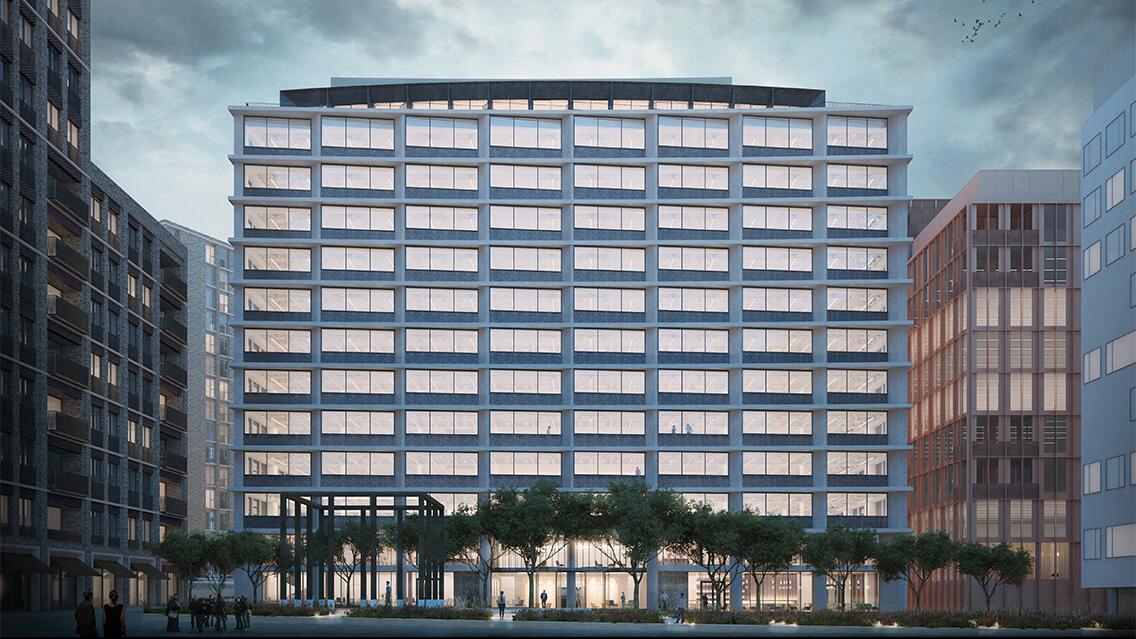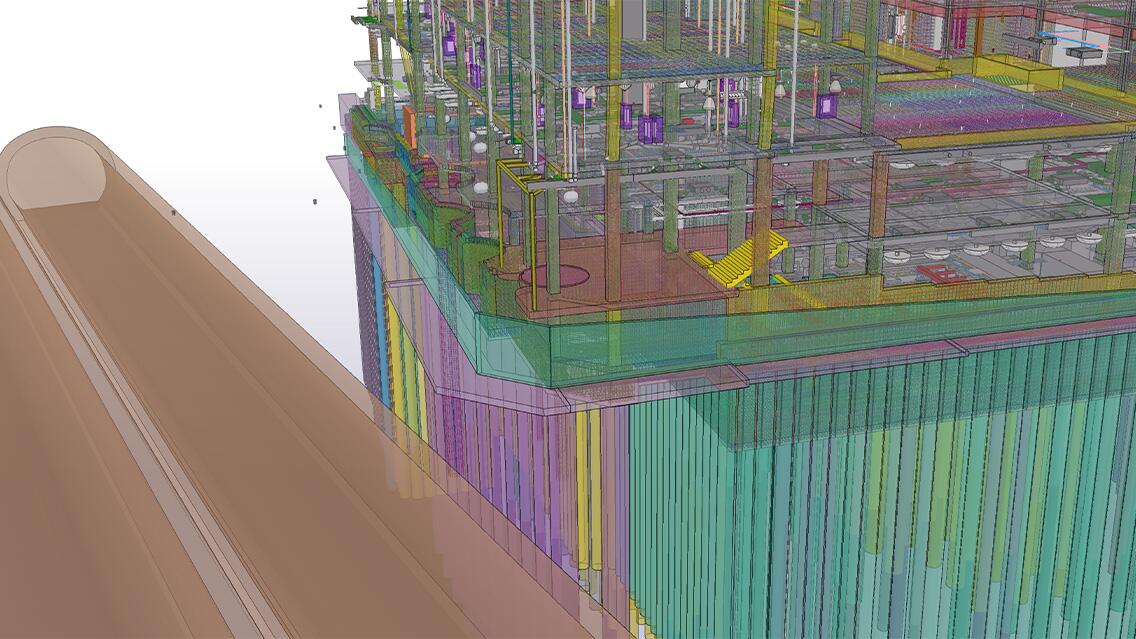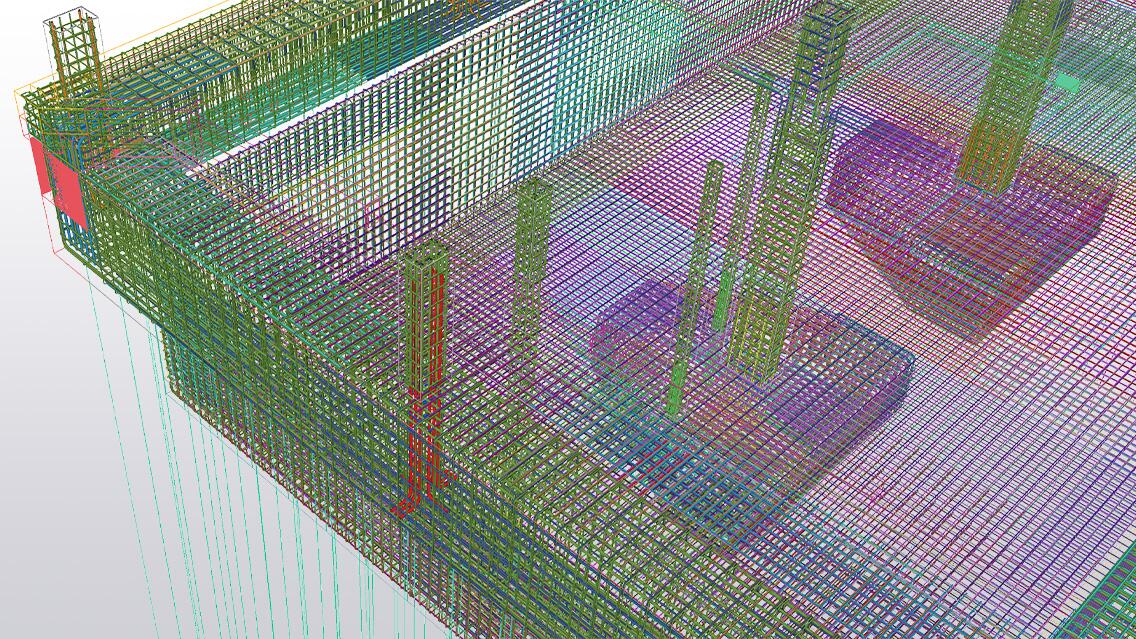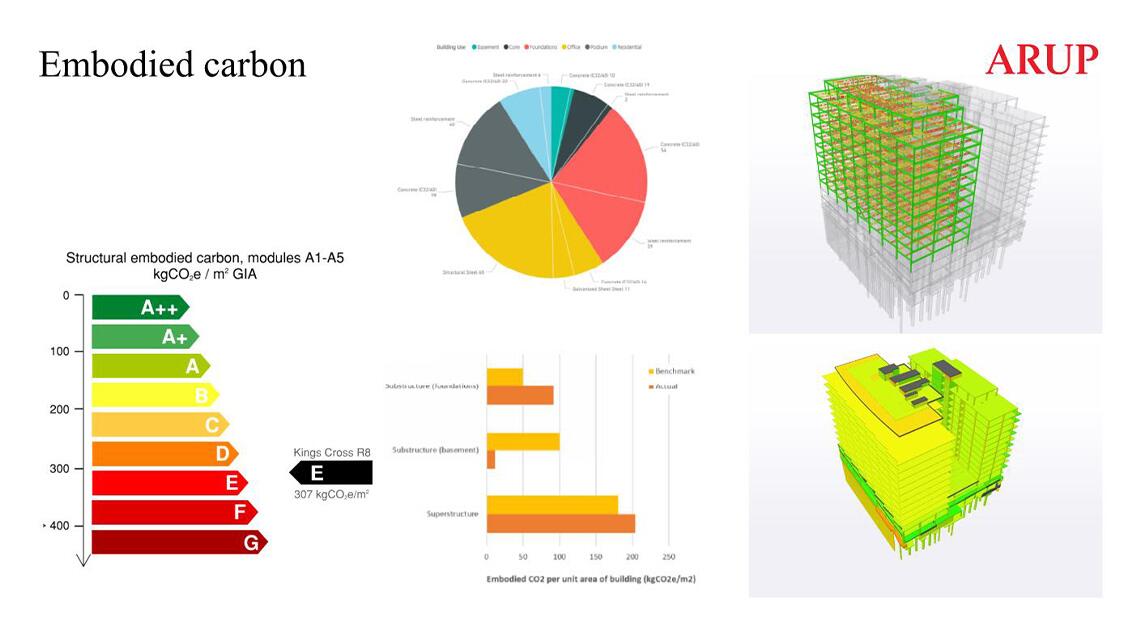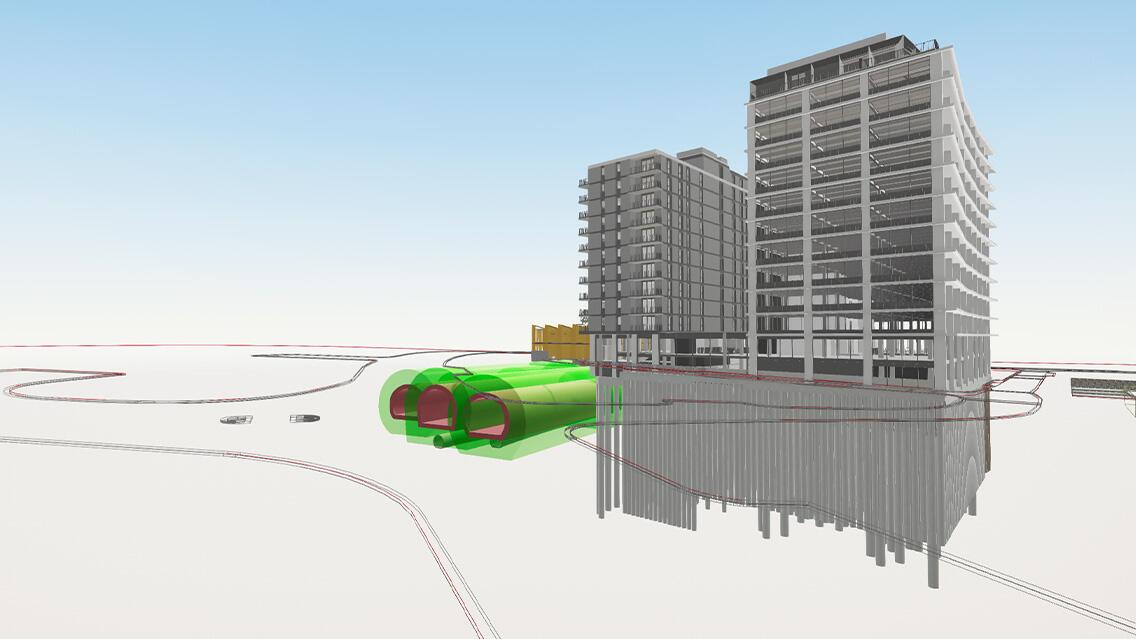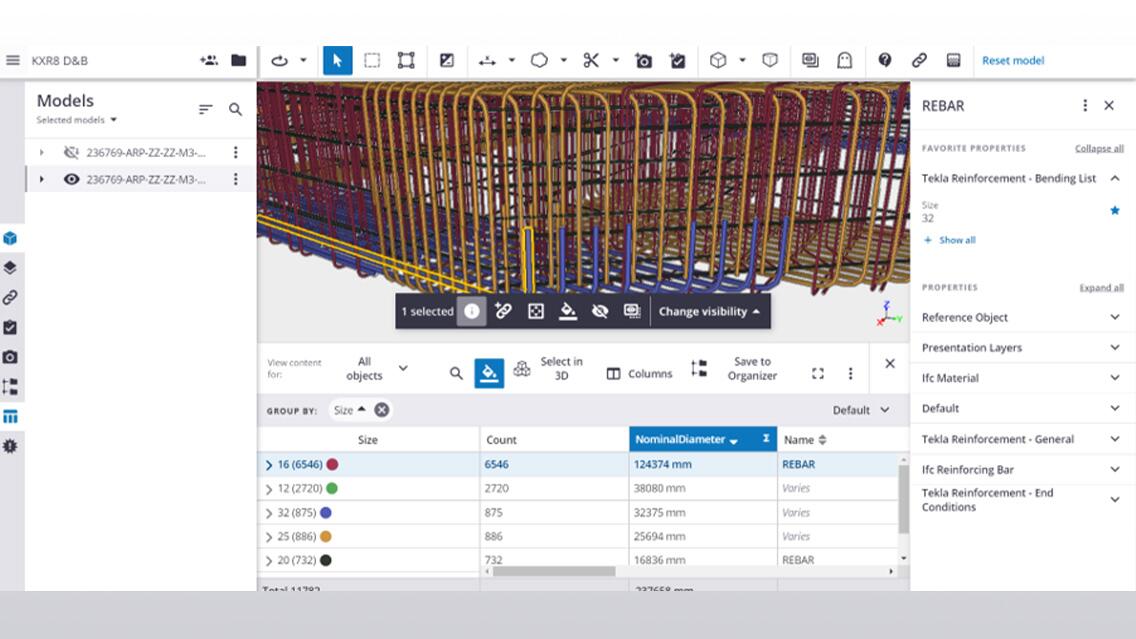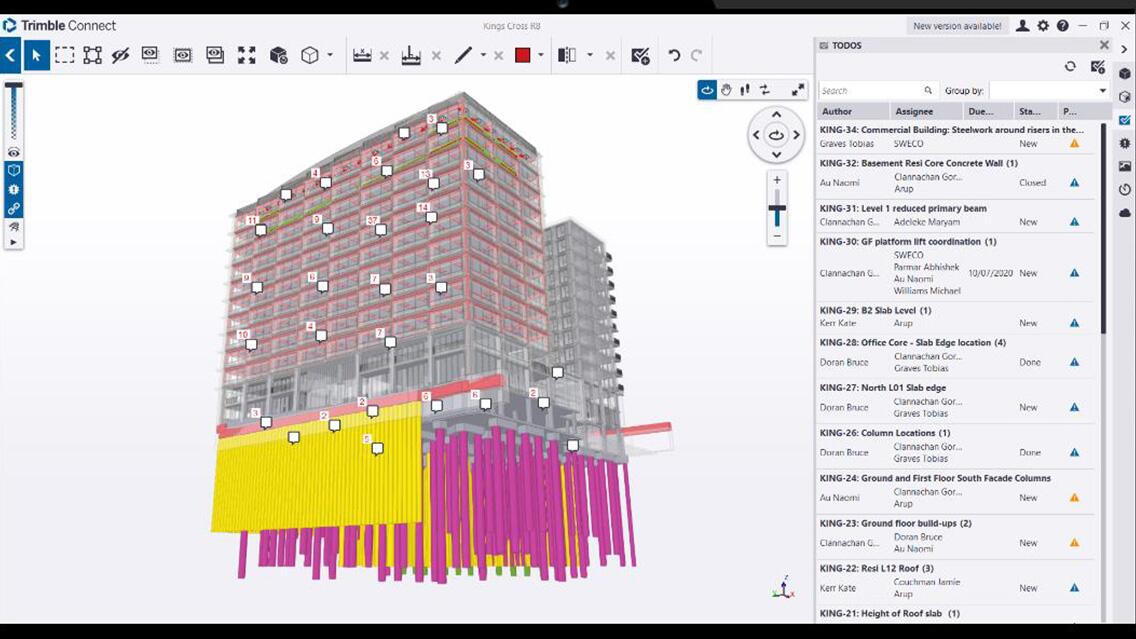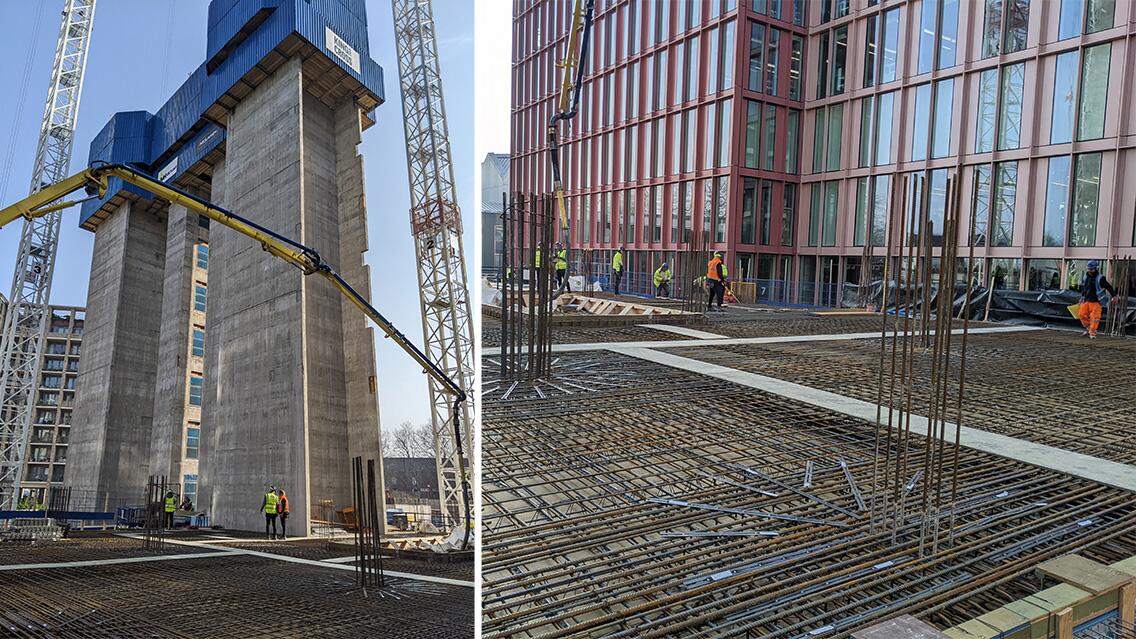Plot R8 forms part of the wider King’s Cross Masterplan in London and is one of the last plots to be constructed. Construction commenced in July 2021 and is on course to top-out at the end of 2022.
This mixed-use commercial project comprises two 13-storey buildings – an office block to the west and a residential block to the east – joined by a 2-storey podium and a single-storey shared basement. The £110 million development will provide approximately 140,000 sq. ft. of B1 office space and over 70 apartments. The project aims to give something back to the community by making generous provisions for small businesses and voluntary sector workspaces in the podium levels, as well as designating all apartments in the residential block for social housing.
A unique engineering challenge for the project is the presence of three shallow brickwork train tunnels within a few metres of the east boundary of the site. These operational tunnels, through which all trains pass to/ and from King’s Cross Station, were constructed between 1840 and 1892 and are sensitive to ground movements. Arup’s team has developed innovative digital tools at every stage of the project from early concept to construction to improve project delivery and add value.
This project has been an exemplar in automation and Tekla Structures has been at the heart of our workflows.
Implementation of automation into workflows
Our client challenged us with submitting Forms A and B to Network Rail at the end of concept design (Stage 2) and scheme design (Stage 3), respectively. These submission targets occurred a stage earlier than the typical approach and required a high level of coordination and drawing information to be produced at the end of Stage 2. To rise to this challenge, we had to be efficient and implement automation into our workflows. The Tekla-Grasshopper Live Link was an integral tool that enabled us to generate our structural BIM model and efficiently respond to fast-paced design development.
Coordinating in a 3D environment from an early stage unlocked a lot of value and we could explore different structural framing options and produce key metrics from the BIM model to inform big decisions. Our Grasshopper script generated the full structural frame and foundations in Tekla Structures, including populating elements with the required User-Defined Attributes for our drawing templates. In addition, the script parametrically controlled our own custom component for forming web openings in steel beams, meaning we could adjust opening setting out seamlessly as the MEP layout developed.
The script also contained Carbon Factors for different life cycle stages and automatically calculated the embodied carbon for every individual element in the structural model as it was generated and embedded this data in the Tekla Model. We used Tekla’s Organizer to export the data at any stage of the project to report the total embodied carbon of the structure as the design evolved.
We created another Grasshopper script to automate the calculation of piles and pilecaps. The Grasshopper script imported column loads from Oasys GSA 10.1 and determined the required number of piles, pile diameters, pile lengths and pilecap types based on capacities provided by our Geotechnical colleagues and our own structural calculations. The script created the piles and pilecaps in Tekla Structures using the Live Link.
3D reinforcement on a large scale
During Stage 4, we used Tekla Structures to model 3D reinforcement for the full substructure package, core wall package and podium columns and produced drawings and full bar bending schedules from the model. This represented the first project in Arup’s Buildings London team to tackle 3D reinforcement on a project of this scale in Tekla Structures.
We used the Tekla API and Grasshopper to create our own C# components that used rebar sets to automate the reinforcement modelling in columns and walls. The scripts read customised .inp files and tabulated csv inputs for reinforcement requirements and populated the reinforcement in the model objects. The scripts considered specified bar stagger arrangements for the slip-form walls and automated the column anchorage details depending on whether or not there was another RC column above.
We created custom filters to carry out reinforcement design checks in 3D in Tekla Structures. This saved time by enabling the design checks to be carried out at the same time as the drawings were being produced from the model. The model was regularly exported to Trimble Connect to enable the engineers less comfortable with working in Tekla to carry out model checks.
Important points or benefits:
- £110 million estimated construction cost
- 71 residential apartments (mix of 1-bed, 2-bed, 3-bed and 4-bed) for social housing
- 140,000 sq.ft B1 Office space
- 3,000 sq.m B1 Small Business Space
- 500 sq.m Voluntary Sector Space
- 307 kgCO2e/m2 structural embodied carbon for modules A1-A5.
- “E” SCORS rating.
- 54 kg/m2 steelwork rate on a typical office floor.

